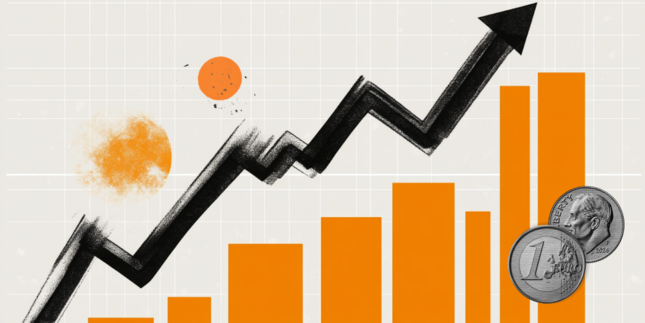Breaking: US Nonfarm Payrolls rise by 177,000 in April vs. 130,000 expected
Nonfarm Payrolls (NFP) in the United States (US) rose by 177,000 in April, the US Bureau of Labor Statistics (BLS) reported on Friday. This reading followed the 185,000 increase (revised from 228,000) reported in March and came in better than the analysts' estimate of 130,000.
Follow our live coverage here
Other details of the employment report showed that the Unemployment Rate remained unchanged at 4.2%, as expected, while the Labor Force Participation Rate ticked up to 62.6% from 62.5%. Finally, annual wage inflation, as measured by the change in the Average Hourly Earnings, held steady at 3.8%.
"The change in total nonfarm payroll employment for February was revised down by 15,000, from +117,000 to +102,000, and the change for March was revised down by 43,000, from +228,000 to +185,000," the BLS noted in its press release. "With these revisions, employment in February and March combined is 58,000 lower than previously reported."
Market reaction to US Nonfarm Payrolls data
The US Dollar Index (DXY) edged slightly higher with the immediate reaction and was last seen losing 0.2% on the day near 100.00.
US Dollar PRICE This week
The table below shows the percentage change of US Dollar (USD) against listed major currencies this week. US Dollar was the strongest against the Japanese Yen.
| USD | EUR | GBP | JPY | CAD | AUD | NZD | CHF | |
|---|---|---|---|---|---|---|---|---|
| USD | 0.43% | 0.30% | 0.83% | -0.28% | -0.58% | 0.30% | -0.33% | |
| EUR | -0.43% | -0.18% | 0.38% | -0.72% | -1.09% | -0.13% | -0.78% | |
| GBP | -0.30% | 0.18% | 0.56% | -0.53% | -0.93% | 0.04% | -0.59% | |
| JPY | -0.83% | -0.38% | -0.56% | -1.07% | -1.35% | -1.91% | -0.89% | |
| CAD | 0.28% | 0.72% | 0.53% | 1.07% | -0.42% | 0.57% | -0.04% | |
| AUD | 0.58% | 1.09% | 0.93% | 1.35% | 0.42% | 0.97% | 0.33% | |
| NZD | -0.30% | 0.13% | -0.04% | 1.91% | -0.57% | -0.97% | -0.62% | |
| CHF | 0.33% | 0.78% | 0.59% | 0.89% | 0.04% | -0.33% | 0.62% |
The heat map shows percentage changes of major currencies against each other. The base currency is picked from the left column, while the quote currency is picked from the top row. For example, if you pick the US Dollar from the left column and move along the horizontal line to the Japanese Yen, the percentage change displayed in the box will represent USD (base)/JPY (quote).
This section below was published as a preview of the April Nonfarm Payrolls data at 06:00 GMT.
- Nonfarm Payrolls are expected to rise by 130K in April, lower than the 228K gain reported in March.
- The United States Bureau of Labor Statistics will publish the employment data on Friday at 12:30 GMT.
- The US jobs report could significantly impact the odds of a June Fed rate cut, rocking the US Dollar.
The United States (US) Bureau of Labor Statistics (BLS) is due to publish the high-impact Nonfarm Payrolls (NFP) data for April on Friday at 12:30 GMT.
The April employment report will be critical to affirm a Federal Reserve (Fed) interest rate cut in June amid prospects of US trade deals with its major Asian trading partners and an unexpected US economic contraction in the first quarter of this year. The data could, therefore, have a strong bearing on the US Dollar (USD) performance in the near term.
In a NewsNation Town Hall interview early Thursday, US President Donald Trump said that he has "potential" trade deals with India, South Korea and Japan and that there is a very good chance of reaching an agreement with China.
What to expect from the next Nonfarm Payrolls report?
Economists expect the Nonfarm Payrolls to show a 130,000 job gain in April after recording a stellar 228,000 print in March. The Unemployment Rate (UE) is set to stay at 4.2% during the same period.
Meanwhile, Average Hourly Earnings (AHE), a closely watched measure of wage inflation, are expected to rise by 3.9% year-over-year (YoY) in April, following a 3.8% increase in March.
Previewing the April employment report, TD Securities analysts said: “Job growth is likely to show no material signs of deterioration in April despite the spectre of high tariffs impacting economic conditions. Indeed, we expect payrolls to decelerate closer to its steady-state following the series' noticeable jump in March.”
“The UE rate is expected to stay unaltered at 4.2%, while wage growth likely lost some momentum, posting a 0.2% month-over-month (MoM) increase,” they added.
How will US April Nonfarm Payrolls affect EUR/USD?
The US Dollar is looking to extend its recovery stint against its major currency rivals as easing trade tensions continue to underpin risk sentiment, outweighing the negative impact from this week’s important US economic data releases.
The first estimate of the US annualized Gross Domestic Product (GDP) showed on Wednesday that the US economy contracted by an annualized rate of 0.3% in the first quarter, due to a surge in imports as US firms frontloaded to get ahead of the US levies.
Meanwhile, the core Personal Consumption Expenditures (PCE) Price Index, which excludes volatile food and energy prices, rose 2.6% in March, down from the 3% increase reported in February. Earlier on Wednesday, the ADP report showed that the US private sector payrolls rose by just 62,000 for the month, the smallest gain since July 2024, down from 147,000 in March and missing the consensus forecast for an increase of 108,000.
All these discouraging US data supported the case for a 25 basis points (bps) interest rate cut by the Fed in June, while a decision to keep rates steady at the current levels is fully priced for next week’s policy meeting. Markets continue predicting a total of four rate cuts by the end of the year, a potential indication that the Fed will prioritize economic growth over inflation.
Last month, Fed policymakers remained wary about the US labor market outlook. Minneapolis Fed President Neel Kashkari said he was worried about potential layoffs caused by trade uncertainty. Additionally, Fed Governor Christopher Waller told Bloomberg that it "wouldn't surprise me to see more layoffs, higher unemployment,” adding that the "easiest place to offset tariff costs is by cutting payrolls."
Against this backdrop, the April jobs data will be closely scrutinized for any clarity on the state of the US labor market and hints on the Fed’s future interest rate moves.
A reading below the 100,000 level could double down on the Fed’s easing prospects, reviving the USD downtrend while lifting Gold price back toward record highs. In case of an upside surprise of a reading above 200,000, Gold could continue its corrective decline as the data could push back against expectations of a June rate cut.
Dhwani Mehta, Asian Session Lead Analyst at FXStreet, offers a brief technical outlook for EUR/USD:
“The main currency pair threatens the key 21-day Simple Moving Average (SMA) at 1.1256 in the lead-up to the NFP showdown. The 14-day Relative Strength Index (RSI) points lower while above the midline, suggesting that the pair remains at a critical juncture.”
“Buyers must defend the 21-day SMA cap to retain the bullish bias. If that happens, a rebound toward the 1.1425 supply zone cannot be ruled out. Further up, the 1.1500 round number will come into play. Conversely, EUR/USD could drop sharply toward 1.1100 if the 21-day SMA gives way sustainably. The next healthy support levels are at the 1.1000 psychological barrier and the 50-day SMA at 1.0956.”
Employment FAQs
Labor market conditions are a key element to assess the health of an economy and thus a key driver for currency valuation. High employment, or low unemployment, has positive implications for consumer spending and thus economic growth, boosting the value of the local currency. Moreover, a very tight labor market – a situation in which there is a shortage of workers to fill open positions – can also have implications on inflation levels and thus monetary policy as low labor supply and high demand leads to higher wages.
The pace at which salaries are growing in an economy is key for policymakers. High wage growth means that households have more money to spend, usually leading to price increases in consumer goods. In contrast to more volatile sources of inflation such as energy prices, wage growth is seen as a key component of underlying and persisting inflation as salary increases are unlikely to be undone. Central banks around the world pay close attention to wage growth data when deciding on monetary policy.
The weight that each central bank assigns to labor market conditions depends on its objectives. Some central banks explicitly have mandates related to the labor market beyond controlling inflation levels. The US Federal Reserve (Fed), for example, has the dual mandate of promoting maximum employment and stable prices. Meanwhile, the European Central Bank’s (ECB) sole mandate is to keep inflation under control. Still, and despite whatever mandates they have, labor market conditions are an important factor for policymakers given its significance as a gauge of the health of the economy and their direct relationship to inflation.
Forex News
Keep up with the financial markets, know what's happening and what is affecting the markets with our latest market updates. Analyze market movers, trends and build your trading strategies accordingly.














